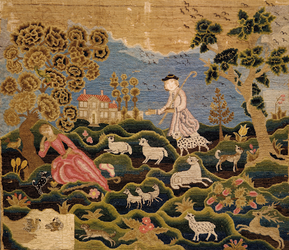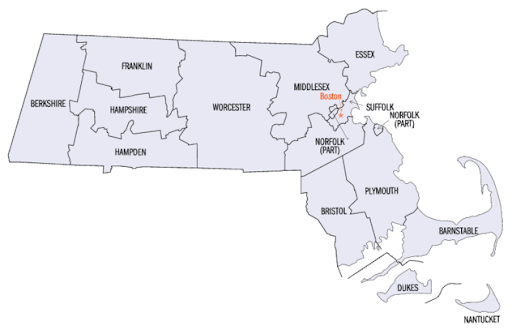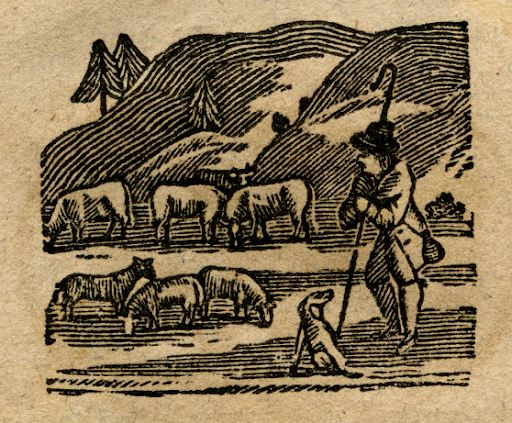Sheep in Early Hampshire County
By: Marla Miller and Emily Whitted
Department of History, University of Massachusetts, Amherst
By: Marla Miller and Emily Whitted
Department of History, University of Massachusetts, Amherst
 needlework picture, Shepherd and Shepherdess, Ann Gardner, Boston; 1770. Embroidered Linen. 57.122.600. Collection of the Metropolitan Museum of Art. Bequest of Mabel Herbert Harper, 1957.
needlework picture, Shepherd and Shepherdess, Ann Gardner, Boston; 1770. Embroidered Linen. 57.122.600. Collection of the Metropolitan Museum of Art. Bequest of Mabel Herbert Harper, 1957.
 Map, Counties of Massachusetts (Wikipedia)
Map, Counties of Massachusetts (Wikipedia)
 The shepherd boy, 1832, p. 6. Rare Book Collections (RB 000). Special Collections and University Archives, University of Massachusetts Amherst Libraries.
The shepherd boy, 1832, p. 6. Rare Book Collections (RB 000). Special Collections and University Archives, University of Massachusetts Amherst Libraries.